General specifications
_______________________________________________________________
22 quai Galliéni
92158 Suresnes Cedex
TEL : (33. 1).42.04.85.85 - FAX : (33. 1).42.04.81.74
Sûreté de Fonctionnement
Soutien Logistique Intégré
Logiciels et Etudes
�
General Specifications
CONTENTS
1. GENERAL PRESENTATION ...................................................................................... 4
INTRODUCTION................................................................................................................ 4
1.1.
FUNCTIONAL STRUCTURE OF SIMLOG............................................................................ 5
1.2.
SIMLOG : GENERAL FUNCTIONALITIES .......................................................................... 7
1.3.
1.4.
SIMLOG : EVALUATION TOOL........................................................................................ 8
1.5.
SIMLOG : OPTIMIZATION TOOL...................................................................................... 9
INSTALLATION PROCEDURE ............................................................................... 11
2.
3.1.2.
3.1.1.1.
3.1.1.2.
3.1.1.3.
3.1.1.4.
3.1.1.5.
3.1.1.6.
3.1.1.7.
3.1.1.8.
3.1.1.9.
3.1.1.10.
3.1.1.11.
3. MODEL LOAD AND CREATION PROCEDURE .................................................. 14
3.1. CREATE AND LOAD MENU DESCRIPTION......................................................................... 14
FILE Menu....................................................................................................................14
New model...............................................................................................................14
Open... .....................................................................................................................14
Save... ......................................................................................................................15
SIMLOG 2.0 import ................................................................................................15
Items data import from a text file............................................................................15
Import of items from an ODBS database ................................................................19
Import SOFIA's Diagram.........................................................................................19
Export Items ............................................................................................................20
Execute command file .............................................................................................20
Setup........................................................................................................................21
Icons ........................................................................................................................22
Edit Menu ....................................................................................................................23
Maintenance tree .....................................................................................................23
Items Tree................................................................................................................25
Reliability Diagrams................................................................................................26
Create a site : ...........................................................................................................28
Create an item..........................................................................................................29
Logistic....................................................................................................................29
Item/Site data :.........................................................................................................33
Complete table :.......................................................................................................34
Modify/Remove/Copy/Paste ...................................................................................36
Copy view................................................................................................................36
3.2. MODEL CREATION PROCEDURE...................................................................................... 37
SIMLOG OPERATIONAL CHARACTERISTICS OF THE CENTRAL CORE 40
4.
TECHNICAL CHARACTERISTICS ...................................................................................... 40
4.1.
4.2.
PERFORMANCES ANALYSIS DESCRIPTION....................................................................... 43
Consistency Checking...................................................................................................44
Operational performances... ........................................................................................45
5. OPTIM-STOCK MODULE......................................................................................... 47
STOCK APPORTIONMENT................................................................................................ 47
5.1.
To perform evaluations ................................................................................................47
To perform Optimizations ............................................................................................48
Export/Print the results ................................................................................................50
PROBABILITY OF NOT RUNNING OUT OF STOCK (PNRS) ............................................... 52
3.1.2.1.
3.1.2.2.
3.1.2.3.
3.1.2.4.
3.1.2.5.
3.1.2.6.
3.1.2.7.
3.1.2.8.
3.1.2.9.
3.1.2.10.
3.1.1.
4.2.1.
4.2.2.
5.1.1.
5.1.2.
5.1.3.
5.2.
- 2 -
�
General Specifications
6. COST MODULE........................................................................................................... 54
INTRODUCTION.............................................................................................................. 54
6.1.
SIMLOG COST MAIN PRINCIPLES ................................................................................ 57
6.2.
6.3.
LCC MODEL DESIGN PROCESS ....................................................................................... 59
Define the objectives ....................................................................................................61
Define the hypothesis....................................................................................................61
Select the cost elements ................................................................................................64
Collect the data/ Cost equations ..................................................................................68
Costs equations inputs..................................................................................................69
Time distribution of costs .............................................................................................70
Costs computations.......................................................................................................71
SOME EXAMPLE OF EXPORT ........................................................................................... 72
6.3.1.
6.3.2.
6.3.3.
6.3.4.
6.3.5.
6.3.6.
6.3.7.
6.4.
- 3 -
�
General Specifications
1.
GENERAL PRESENTATION
1.1.
INTRODUCTION
SIMLOG is a computer aided evaluation which helps the logistician develop Integrated
Logistic Support Elements for one or several repairable complex systems.
A support system corresponds to a set of support elements, the main components of
which are represented on the following drawing:
Handling/Packaging
Transporting/
conditioning
Provisioning
Spares
Computer
Man power and
Technical
Assistance
Logistic Support
Elements
Maintenance Plan
Training
Technical Documentation
Infrastructures
Test/Support
Equipment
Figure 1: Integrated Logistic Support Elements
Every support element is an homogeneous component which can be:
the supplying of an hardware component (spare, support equipment),
o
o a service (training, manpower...),
o a data or information supply ( technical documentation, maintenance plan).
These support elements are essential and do exist for every system. They represent
important costs and do necessitate a perfect knowledge of logistic informations.
- 4 -
�
General Specifications
1.2.
FUNCTIONAL STRUCTURE OF SIMLOG
SIMLOG is the Integrated Logistic Support tool which has been developed and
maintained by our engineers. The interface with SIMFIA is possible, but SIMLOG can
be used independently.
SIMLOG has three applicatives modules:
OPTIM-STOCK
COST
SIMLOG
central core
*
LORA
Figure 2: Functional structure of SIMLOG
o The CENTRAL CORE allows the description of the system equipment and the
associated support system.
o OPTIM-STOCK is an optimization module which allocates the optimal initial spares.
o COST is the generator of Life Cycle Cost models.
o LORA is the Level Of Repair optimization model (in project).
- 5 -
�
General Specifications
The general characteristics of the softwares developed by SOFRETEN engineers are
following:
- Reliability/Performances:
The algorithms used in SIMLOG have been validated and optimized by Research
Centres. Our R & D team always integrates the State of the Art of the most recent
approaches and technologies, to be able to adopt the most recent theoretical and
practical technics in SIMLOG.
- Human Engineering / Graphic tools:
The user is continuously assisted by clear menus. SIMLOG uses all possibilities of
Windows (Mouse, colors, zoom,...).
- 6 -
�
General Specifications
1.3. SIMLOG : GENERAL FUNCTIONALITIES
The different functionalities of SIMLOG are summarized in the next chart, knowing that
each term is defined in a glossary at the end of the document:
Imports/Exports
standards files:
Excel, ASCII...
SIMLOG Data base
Support system
Economic
environment
- Logistic tree
- Quantity and
localisation of spares
- Mission time
- Interest rate
- Cost breakdown
Structure
- Date of beginning and
ending of cost occurency
- priodicity of occurency
- maximal vector of
dependence
Reliability
Diagram
- Structure: serie,
parallel, redondancy
- Item breakdown
structure
Items
- Name
- Code
- Lambda
- MET
- Unit cost
- MTRG
-Maintenance
policy
- Maintenance
strategy
Central Core
Availability
computations
Inherent
Achieved
Operational
DISPO-STOCK:
Optimisations
Availability/Cost
PNRS/Cost
COST: Generator of
Life Cycle Cost
(LCC,LSC...)
Figure 3 : SIMLOG: ILS evaluation tool
- 7 -
�
General Specifications
1.4. SIMLOG : EVALUATION TOOL
Using data related to systems, SIMLOG allows to evaluate Reliability, Maintainability
and Availability characteristics, concerning the whole system, as well as each of its
components (called « items »).
For a certain configuration of the support system, SIMLOG evaluates different output
data which are unavoidable for the logistician to perform his choices, as well as the:
investment costs related to the initial spares,
o
o operational performances characteristics of the operational sites, the systems,
and their components,
o PNRS ( Probability of Not Running out of Stock) for a given duration of
mission, or for a transitory phase;
o average spares demand.
SIMLOG thus allows the user to obtain simulated situations. Provoking different
variations of the input parameters, he can perform comparative analyses.
Through the module COST, SIMLOG is a generator of Life Cycle Cost models. The
user design the Cost Breakdown Structure . At each leaves of this tree the user gives
the formula to be used for computation and the dependencies with the system
equipment or support system:
o Sites
o
Item
o Personnel
o Technical documentation
o Test and support equipment
o Consumable
o Year
Results can be visualized through different projections:
o Time projections: All or a part of the Life Cycle
o System equipment/ Support system projections
- 8 -
�
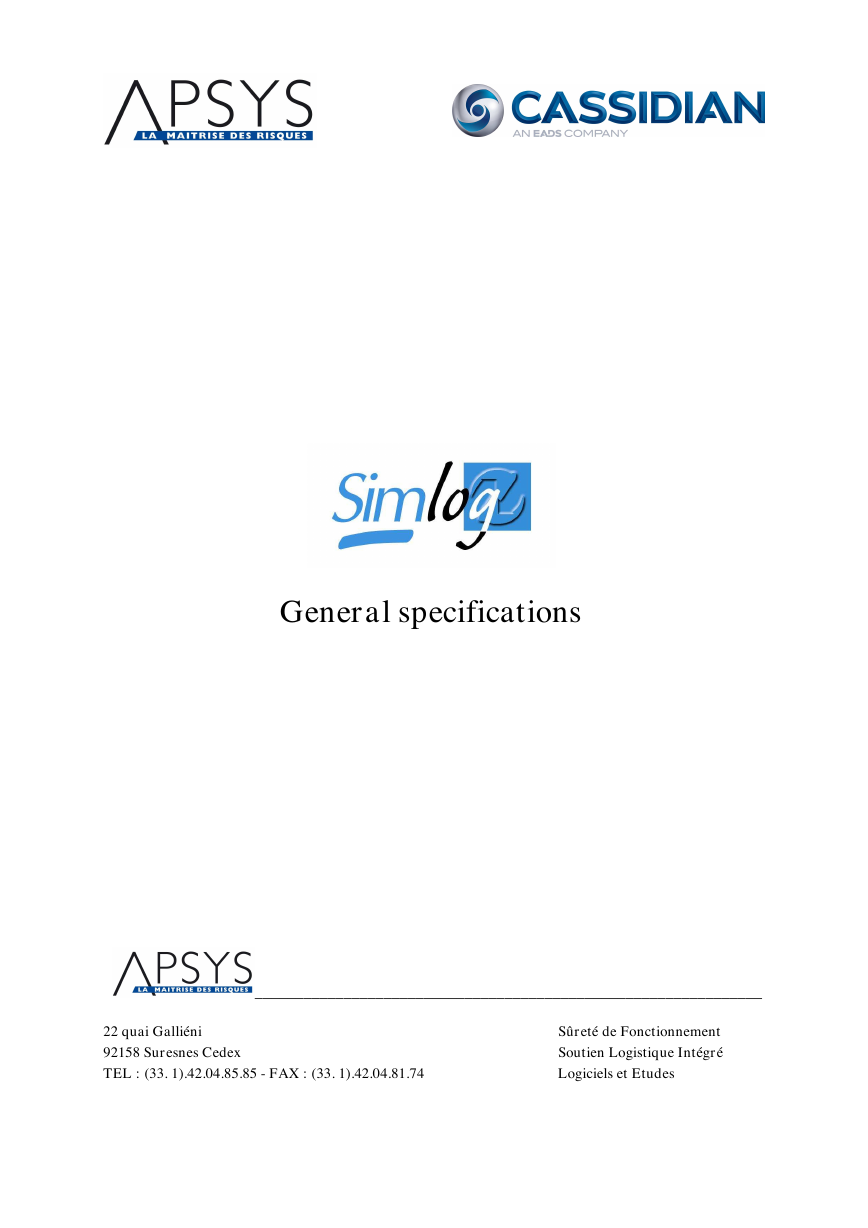
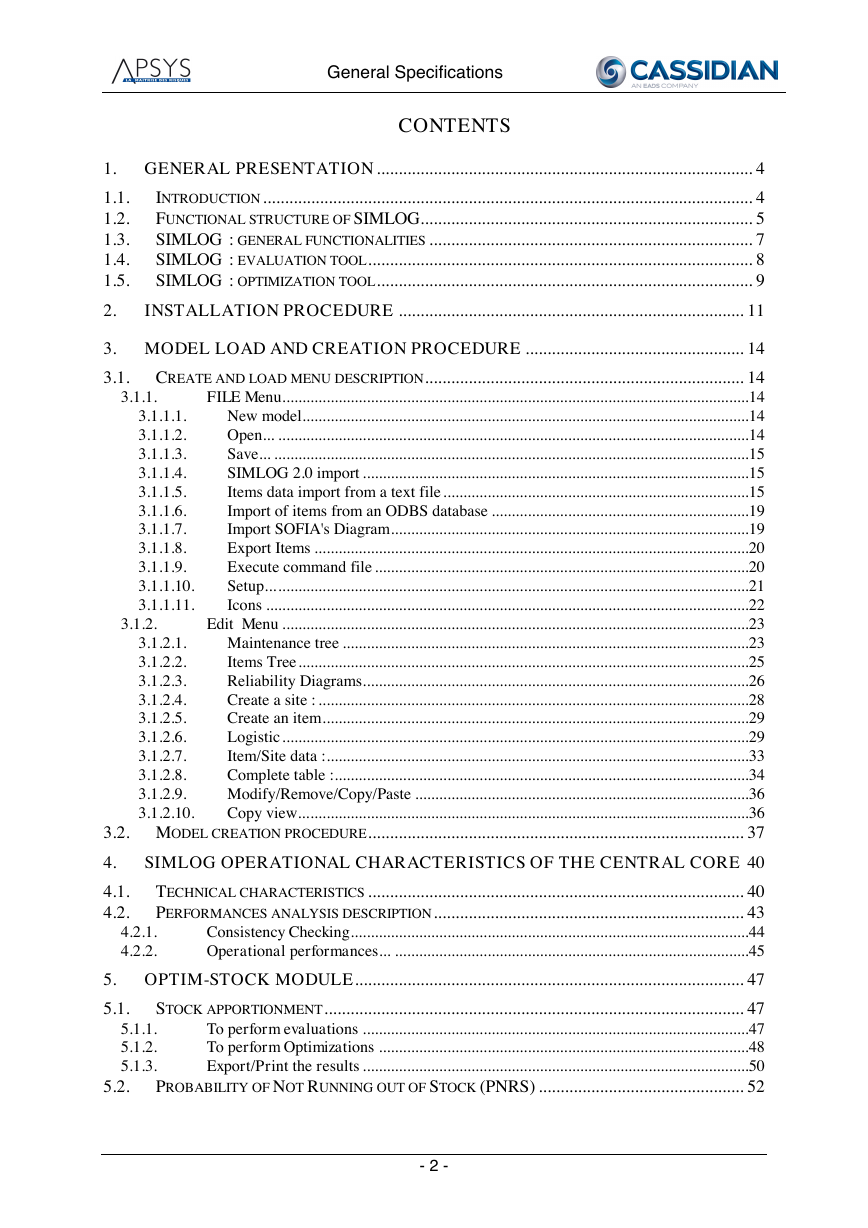
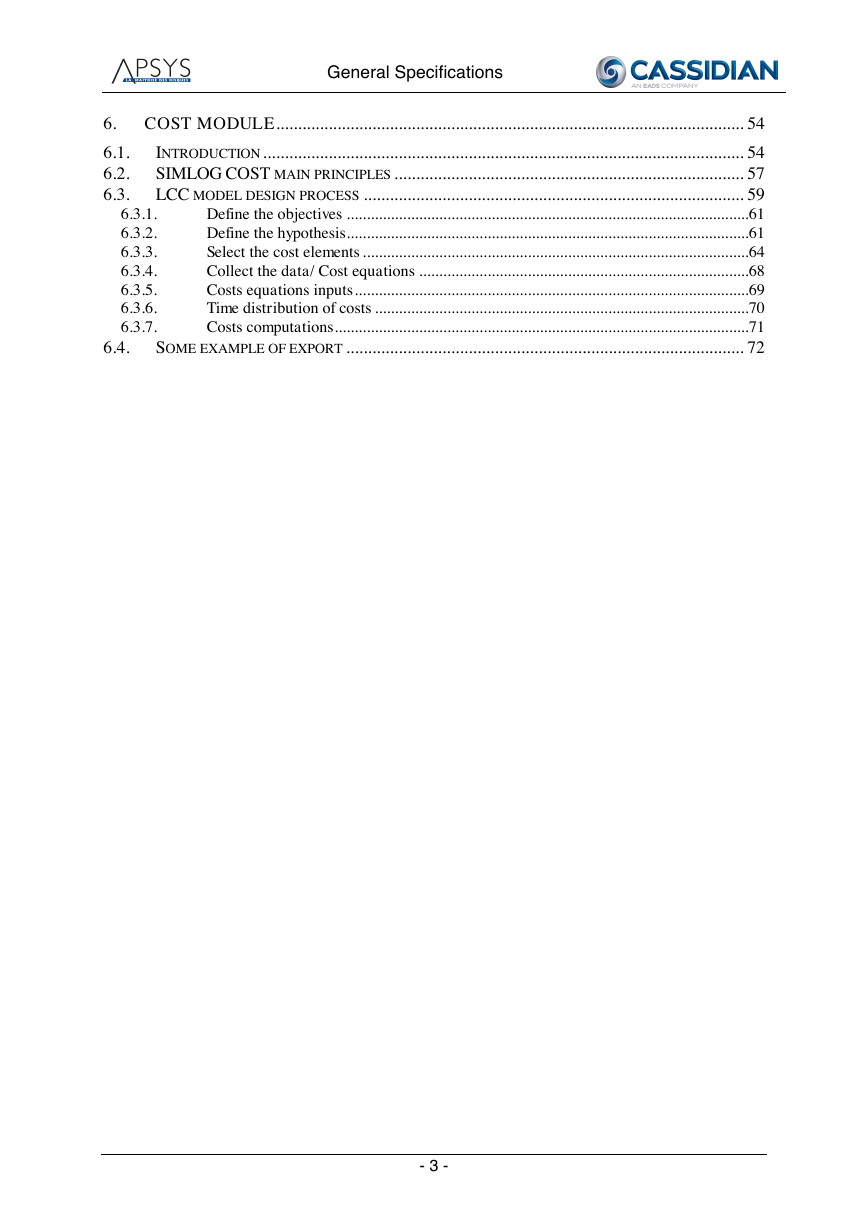
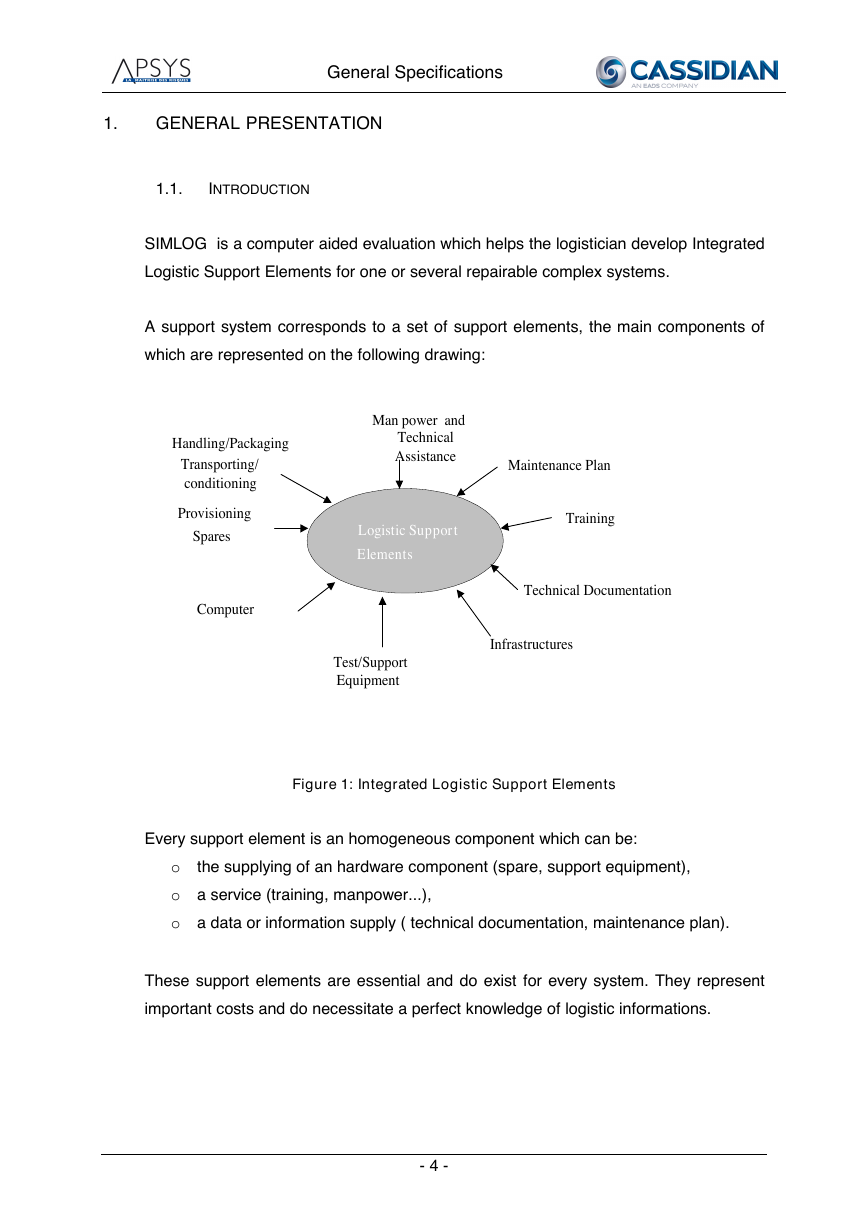
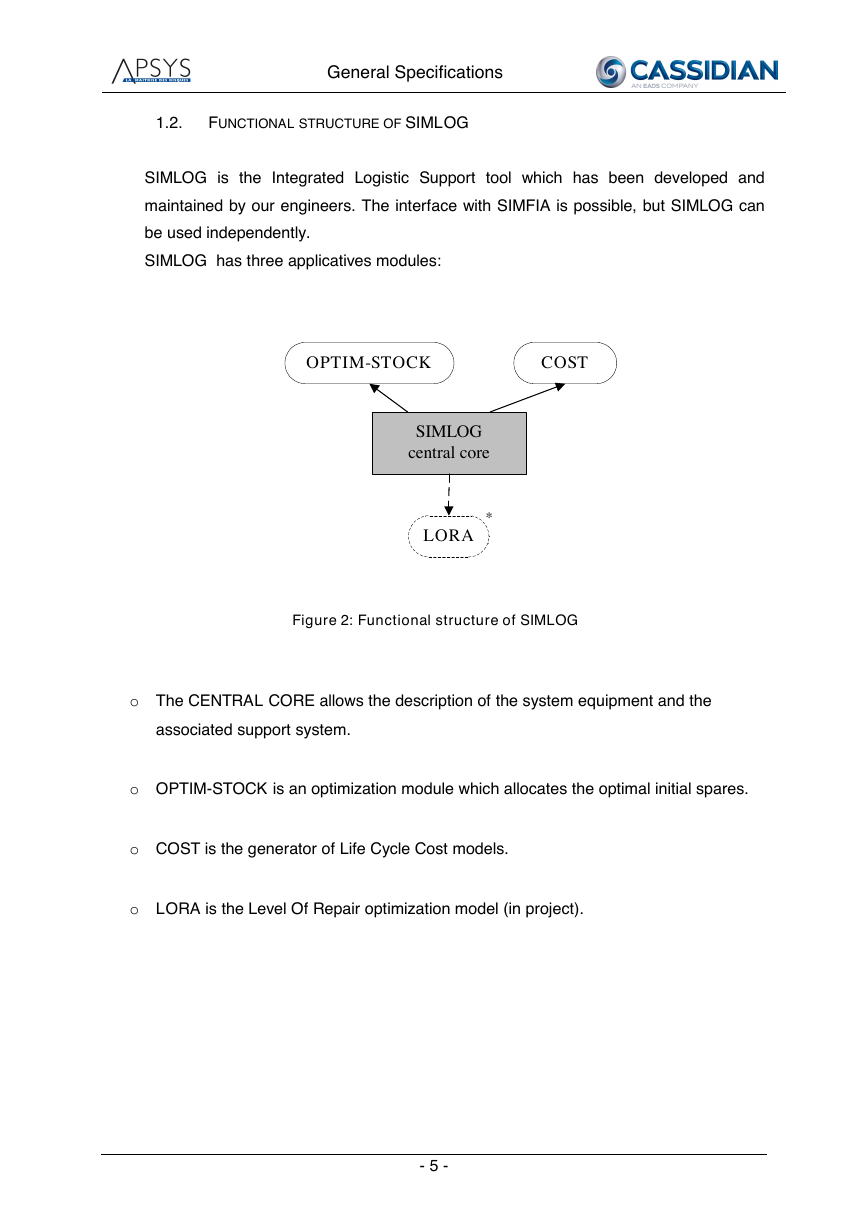
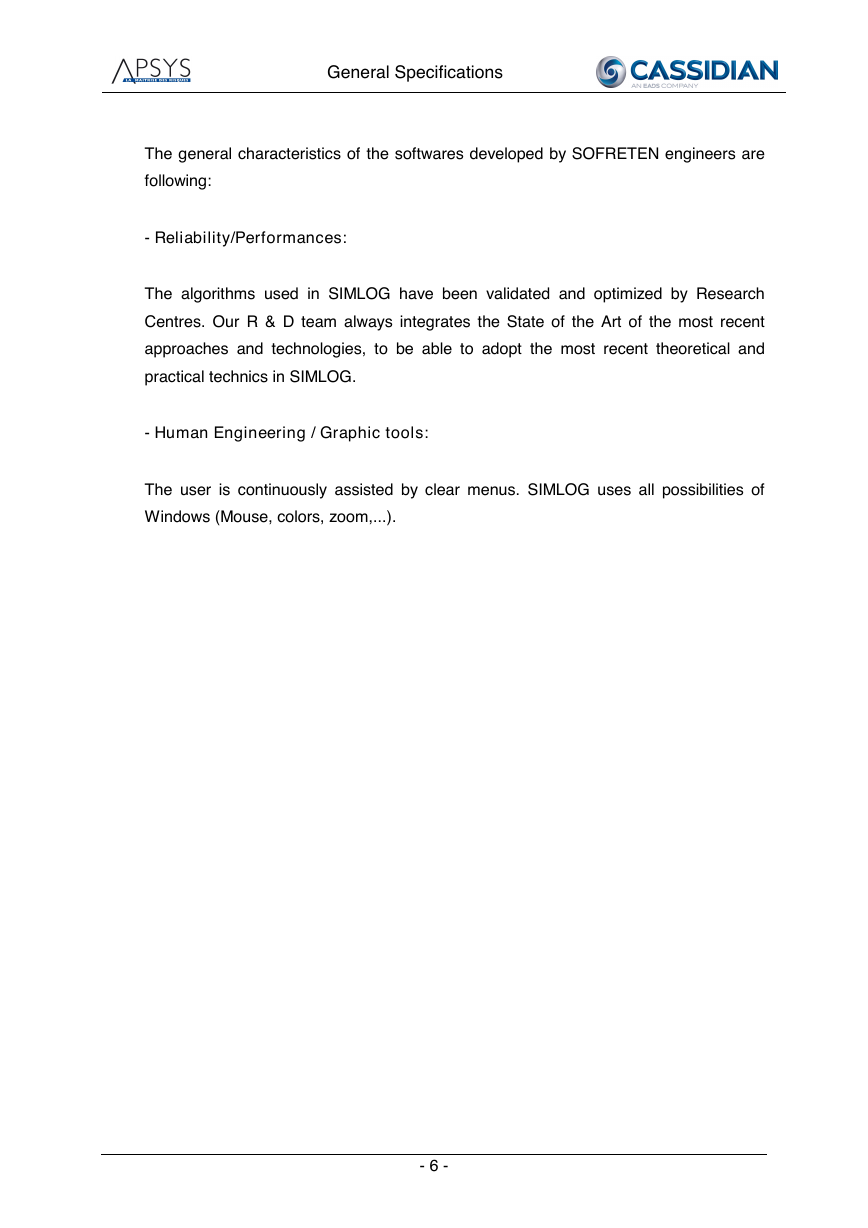

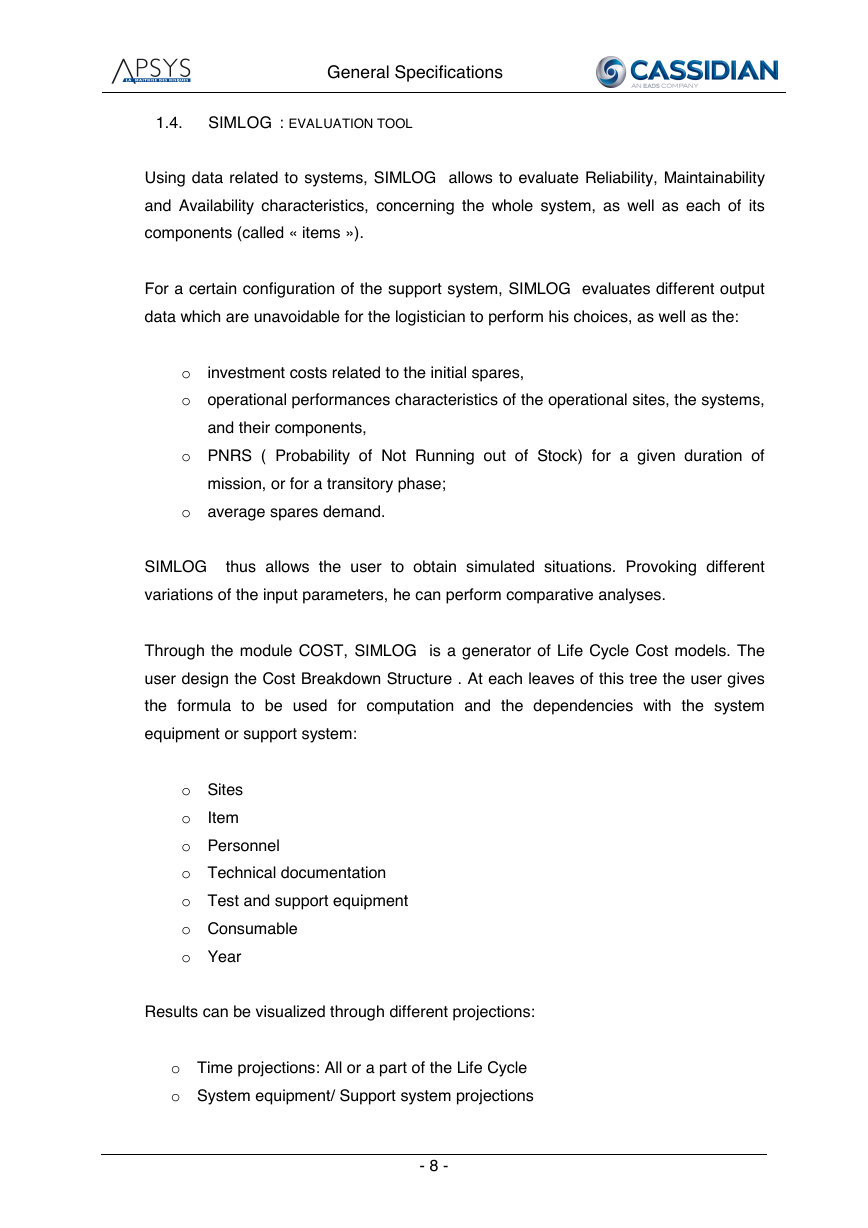








 2023年江西萍乡中考道德与法治真题及答案.doc
2023年江西萍乡中考道德与法治真题及答案.doc 2012年重庆南川中考生物真题及答案.doc
2012年重庆南川中考生物真题及答案.doc 2013年江西师范大学地理学综合及文艺理论基础考研真题.doc
2013年江西师范大学地理学综合及文艺理论基础考研真题.doc 2020年四川甘孜小升初语文真题及答案I卷.doc
2020年四川甘孜小升初语文真题及答案I卷.doc 2020年注册岩土工程师专业基础考试真题及答案.doc
2020年注册岩土工程师专业基础考试真题及答案.doc 2023-2024学年福建省厦门市九年级上学期数学月考试题及答案.doc
2023-2024学年福建省厦门市九年级上学期数学月考试题及答案.doc 2021-2022学年辽宁省沈阳市大东区九年级上学期语文期末试题及答案.doc
2021-2022学年辽宁省沈阳市大东区九年级上学期语文期末试题及答案.doc 2022-2023学年北京东城区初三第一学期物理期末试卷及答案.doc
2022-2023学年北京东城区初三第一学期物理期末试卷及答案.doc 2018上半年江西教师资格初中地理学科知识与教学能力真题及答案.doc
2018上半年江西教师资格初中地理学科知识与教学能力真题及答案.doc 2012年河北国家公务员申论考试真题及答案-省级.doc
2012年河北国家公务员申论考试真题及答案-省级.doc 2020-2021学年江苏省扬州市江都区邵樊片九年级上学期数学第一次质量检测试题及答案.doc
2020-2021学年江苏省扬州市江都区邵樊片九年级上学期数学第一次质量检测试题及答案.doc 2022下半年黑龙江教师资格证中学综合素质真题及答案.doc
2022下半年黑龙江教师资格证中学综合素质真题及答案.doc